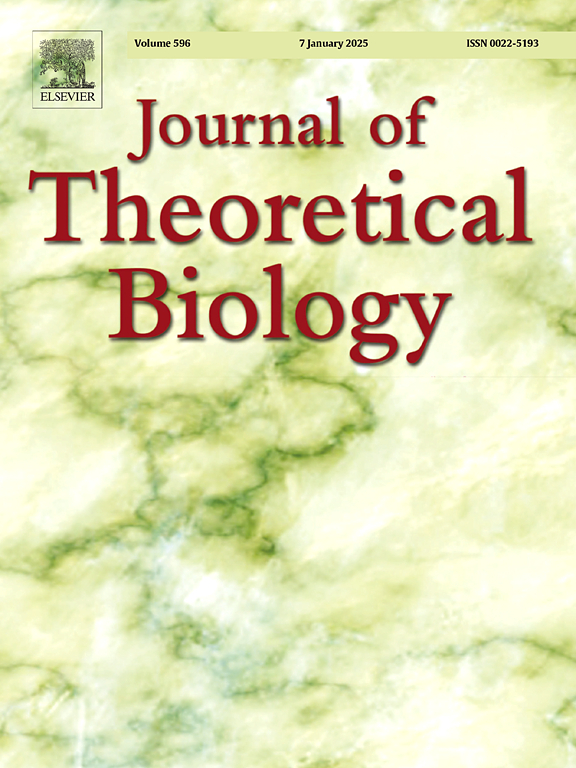Assessing respiratory virus co-infections using an identifiable model: the case of influenza and SARS-CoV-2 in Italy
IF 2
4区 数学
Q2 BIOLOGY
引用次数: 0
Abstract
This study investigates the dynamics of co-infections during an epidemic, particularly in the absence of official data on co-infected individuals. The research has two primary objectives: first, to assess the robustness of the two-pathogen co-infection model proposed by Fahlena et al. (Chaos Sol. Fract., 2022) in terms of structural and practical identifiability; and second, to evaluate the time variation of co-infection percentages in Italy during the winter of 2023–2024. The identifiability analysis is based on official data regarding influenza and SARS-CoV-2 cases, complemented by estimated co-infection data under two scenarios (high and low levels of co-infection). The study finds that when both weekly infection and co-infection data are available, the model’s parameters are structurally identifiable. However, if only incidence data for each virus are available, five parameters must be fixed to achieve both structural and practical identifiability, with the remaining parameters being identifiable. Additionally, the model suggests that a unimodal time profile of co-infection percentages could have occurred in Italy during the study period. These results emphasize the importance of comprehensive data for model identification and co-infection estimation during epidemics.
使用可识别模型评估呼吸道病毒合并感染:意大利流感和SARS-CoV-2病例
本研究调查了流行病期间合并感染的动态,特别是在缺乏合并感染个体的官方数据的情况下。本研究有两个主要目标:首先,评估Fahlena等人(Chaos Sol. fact)提出的两病原体共感染模型的稳健性。, 2022)在结构和实际可识别性方面;二是评估意大利2023-2024年冬季合并感染百分比的时间变化。可识别性分析基于有关流感和SARS-CoV-2病例的官方数据,并辅以两种情况下(高水平和低水平共同感染)的估计合并感染数据。研究发现,当每周感染和合并感染数据都可用时,模型的参数在结构上是可识别的。但是,如果只有每种病毒的发病率数据可用,则必须确定五个参数,以实现结构和实际可识别性,其余参数可识别。此外,该模型表明,在研究期间,意大利可能出现了合并感染百分比的单峰时间分布。这些结果强调了流行病期间综合数据对模型识别和合并感染估计的重要性。
本文章由计算机程序翻译,如有差异,请以英文原文为准。
求助全文
约1分钟内获得全文
求助全文
来源期刊
CiteScore
4.20
自引率
5.00%
发文量
218
审稿时长
51 days
期刊介绍:
The Journal of Theoretical Biology is the leading forum for theoretical perspectives that give insight into biological processes. It covers a very wide range of topics and is of interest to biologists in many areas of research, including:
• Brain and Neuroscience
• Cancer Growth and Treatment
• Cell Biology
• Developmental Biology
• Ecology
• Evolution
• Immunology,
• Infectious and non-infectious Diseases,
• Mathematical, Computational, Biophysical and Statistical Modeling
• Microbiology, Molecular Biology, and Biochemistry
• Networks and Complex Systems
• Physiology
• Pharmacodynamics
• Animal Behavior and Game Theory
Acceptable papers are those that bear significant importance on the biology per se being presented, and not on the mathematical analysis. Papers that include some data or experimental material bearing on theory will be considered, including those that contain comparative study, statistical data analysis, mathematical proof, computer simulations, experiments, field observations, or even philosophical arguments, which are all methods to support or reject theoretical ideas. However, there should be a concerted effort to make papers intelligible to biologists in the chosen field.

 求助内容:
求助内容: 应助结果提醒方式:
应助结果提醒方式:


